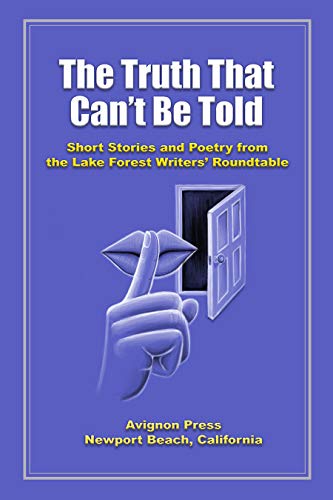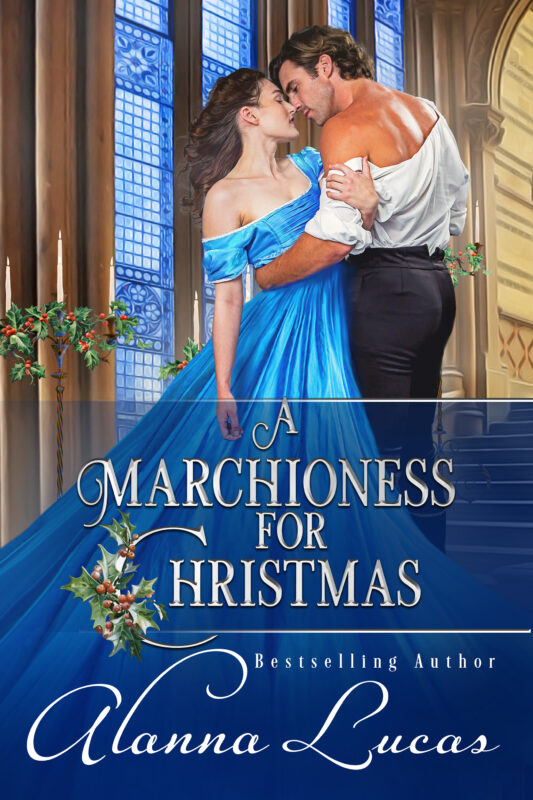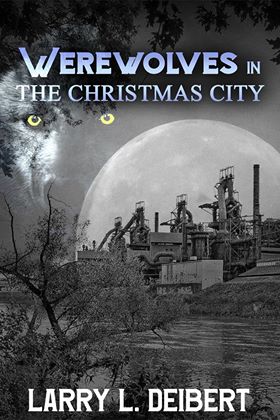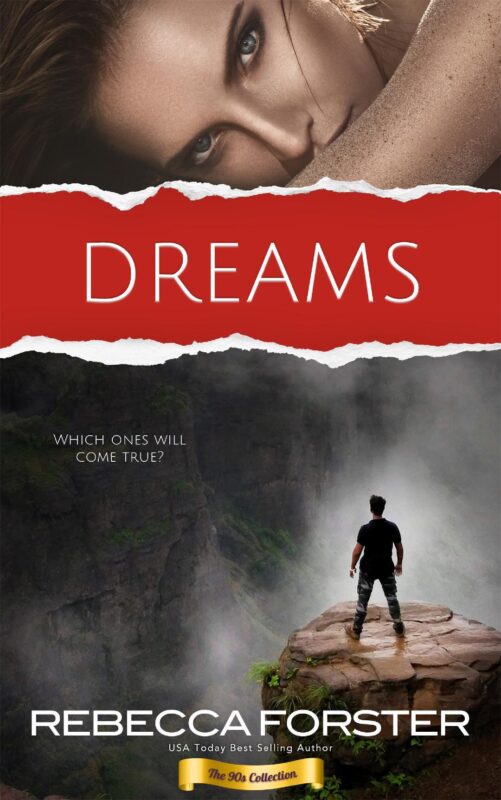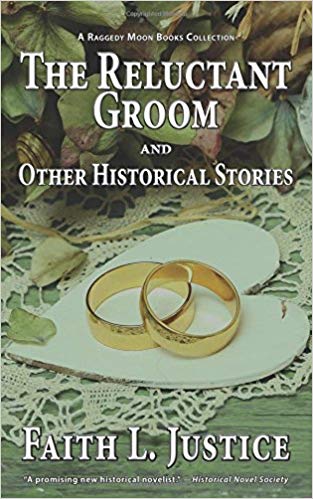Hot! Hot! Hot! by Carol L. Wright
July 13, 2024 by Bethlehem Writers Group in category From a Cabin in the Woods by Members of Bethlehem Writers Group tagged as 2025 Short Story Award, anthologies, BWG, Carol L Wright
And we’re not even talking about the summer weather. What’s so hot right now?
Hot topic #1:
This month, the Bethlehem Writers Group, LLC, announced the winners of its 2024 Short Story Award competition for works of 2000 words or fewer on the theme of “Holiday Tales.” For this competition, “holiday” was defined as anything from U.S. Thanksgiving through New Year’s Day. The talented authors whose stories are honored are:
First Place: Rhonda Zangwill, New York, NY, for “Oh! Christmas Tree”
Second Place: Bettie Nebergall, Mt. Dora, FL, for “Just Ask Santa”
Third Place: Mary Adler, Forestville, CA, for “Nellie the Narragansett and the Transferware Platter”
Honorable Mentions (in alphabetical order by author’s last name):
- A. C. Blake, West Columbia, SC for “A Feast to Die For”
- J. Bosley, New York, NY for “A Wintry Mix”
- Joan Mularz, Palm Beach Gardens, FL for “Cousin Bonnie’s Plus One”
Many thanks to Marlo Berliner, our Guest Judge, who selected this year’s winners.
Hot topic #2:
For the first time in the history of the Short Story Award, BWG decided to offer print publication to the second- and third-place winners instead of only to the one who won first-place. This means that you’ll get to read all three of these terrific stories in one volume.
Hot topic #3:
The book in which these stories will appear, Season’s Readings: More Sweet, Funny, and Strange® Holiday Tales will be published this fall in print (ISBN: 978-1-954675-04-9) and ebook (ISBN: 978-1-954675-05-6). In addition to this year’s contest winners, the 2023 contest first-place winner, Sally Milliken’s “First Thanksgiving,” will also be included. And, of course, you’ll also get stories from the authors of the Bethlehem Writers Group. Some of the stories are heart-warming, others quirky, and still others with a hint of magic. Watch for the book to be available on October 1.

And a bonus sizzle for writers!

As if the book coming out on October 1 weren’t enough excitement, we’ll also be unveiling the 2025 Short Story Award competition that day in the fall issue of Bethlehem Writers Roundtable (https://bwgwritersroundtable.com). For next year’s contest, which will open on January 1, 2025, we’ll be looking for stories of science fiction and/or fantasy, and this year we’ll allow the stories to be a bit longer with a 2500 word maximum. The top three winners will receive cash and offers of publication (in print or online in Roundtable). We’ll have all the info for you in October, but until then, sharpen your pencils, grab a cool drink, find a place in the shade, and fire up your sci-fi/fantasy muse. Your story could be the next hot topic!
Enjoy your simmer, er summer.
Book from BWG
Books by Carol L. Wright
New Release: Dark of the Day
April 8, 2024 by marianne h donley in category Apples & Oranges by Marianne H. Donley, Spotlight tagged as Carol L Wright, Dark of the Day, Debra H Goldstein, Eclipse Stories, new release, Paula Gail Benson
An anthology of stories to celebrate the April 2024 eclipse in North America. These stories are located in various places and are even of various genres and themes. What they have in common, besides featuring eclipses, are that they are all written by brilliant authors and will all entertain you. Read them before the eclipse, to get into the mood, or after, to nostalgically remember it.
During the darkness, all manner of things can happen. When people are distracted by this spectacular celestial event, criminals can operate unimpeded, they can also be caught.

Trips to see the event can lead to disaster, or they can save the day. And the science of looking at the sun becomes important when a partner strays.
The event can mean many different things to a disaster cult, to drug-dealing Russians, to an artist striving for his grand opus.
It spreads across the country to, maybe, give confirmation to a program to analyze the universe, to give a gift to a mermaid in an abandoned water park, to show what the crazy guy at the fast food place is really like, to help a young girl find her way.
As a not-so-clever crime goes awry, a hike to view the spectacle is interrupted.
Contributors include Cari Dubiel, Katherine Tomlinson, Carol L. Wright, Joseph S. Walker, John Rogers Clark IV, M. K. Waller, Toni Goodyear, Laura Oles, Bridges DelPonte, Eric Beckstrom, Kaye George, Paula Gale Benson, John M. Floyd, Debra H. Goldstein, Michael Bracken, and James A. Hearn.
Purchase Links
Other Eclipse Stories
0 0 Read moreAPPLE, TABLE, PENNY… MURDER A REVIEW BY VERONICA JORGE
September 22, 2023 by Veronica Jorge in category Write From the Heart by Veronica Jorge tagged as Apple Table Penny .Murder, Book Reivew, Carol L Wright, Veronica Jorge

Transitions and downsizing are never easy, but after the loss of her husband, Suzy Kemp knows a retirement community is the best decision for her. Thankfully, she has her devoted son to help her through the process. And today she’s all set to move into the independent-living apartment she selected.
Suzy goes through the check-in process and final health assessments, but her mind is on her cute apartment with a patio and a garden, her furniture that should arrive tomorrow, and other details of her new life. Is it any wonder then that she missed a few of the memory test questions? It could happen to anyone.
Suzy finds herself being wheeled into a hospital style memory care unit instead of her own apartment.
She tries to adjust to what she hopes is a temporary situation, but making friends with people who can’t remember who she is, or who they are, is a challenge. Hearing screams in the night doesn’t help either.
Things take a turn for the worse when Suzy notices that Jeanette, one of the residents, is missing. Perhaps she’s gone home? Gotten better and moved into her own apartment? Like the one she should be in instead of here.
But when Suzy inquires about Jeannette, everyone pretends she doesn’t exist.
Suzy questions her memory and her sanity, but when another resident disappears, Suzy is convinced that something strange and criminal is taking place in the retirement community. But who’s going to believe her, a woman with memory issues? And who can she trust?
Suzy is determined to discover what’s going on. And it’ll take all of her deductive skills, and memory, to work out the clues that will hopefully prevent others from disappearing, including her.
Apple, Table, Penny…Murder, is witty and intriguing with just the right amount of suspense, mystery, and humor. A delightful and entertaining read.
Veronica Jorge
See you next time on October 22nd!
Other Books Reviewed by Veronica
Anticipation
September 13, 2023 by Bethlehem Writers Group in category From a Cabin in the Woods by Members of Bethlehem Writers Group tagged as autumn, Bethlehem Writers Group, Bethlehem Writers Roundtable, BWG, Carol L Wright
Okay, I know it isn’t officially Autumn until September 22, but the kids are back in school, pumpkin spice everything is available again, and I have even seen a few trees with leaves that are starting to turn. Close enough for me.
Fall is my favorite season of the year. I don’t much enjoy the heat of summer, so the cooler days and sometimes almost-nippy nights fill me with anticipation.
From now until the end of the year, there is one happy event after another: Halloween, Thanksgiving, Hanukkah, Christmas, Kwanzaa, New Year’s Eve, and several family birthdays. These holidays and their traditions mark the passage of our annual orbit of the sun. Before I know it, that “holiday feeling” inspires me to start singing It’s the Most Wonderful Time of the Year. (Why did that allergy medicine have to use that as their advertising jingle?) No matter. For me it is the most wonderful time of the year.
Along with the change of seasons comes a spate of vendor fairs where I, along with some of my writing colleagues from the Bethlehem Writers Group, go to market our themed Sweet, Funny, and Strange® anthologies (including our award-winning first anthology: A Christmas Sampler: Sweet, Funny, and Strange Holiday Tales, and our award winning second anthology: Once Around the Sun: Sweet, Funny, and Strange Tales for All Seasons.) Meeting and talking with shoppers as they go from table to table picking up gifts for loved ones (while tasting traditional baked goods and beverages) adds to the fun of the season.
We even have some exciting news to share about our most recent title, An Element of Mystery: Sweet, Funny, and Strange Tales of Intrigue. It was named a finalist for two international book awards: the Next Generation Indie Book Award and the Killer Nashville Silver Falchion Award. We’re honored by the recognition and pleased to put these medals on our book cover.

I also have a new novelette to peddle this fall. It’s entitled Apple, Table, Penny . . . Murder and tells of recently widowed Suzy Kemp who decides to downsize to an independent-living apartment in a retirement community. But when she goes in for her final health screening, she becomes confused and is abruptly confined to a memory care unit . . . with no way out. What’s worse, she suspects the late-night departure of another resident has a sinister cause. No one takes her suspicions seriously, so she’s determined to investigate on her own, to uncover what happened to her neighbor and to prove she hasn’t lost her mind. (And it’s set around Thanksgiving!) It’s available at online retailers, for order through brick-and-mortar stores, and, of course, at our vendor fairs.
Another of our members, Emily P. W. Murphy, has also recently published a delightful children’s book about being true to yourself. It’s entitled The Princess of Booray and is available anywhere you can find Apple, Table, Penny . . . Murder.

One more thing I look forward to this fall is that in November, for the first time, my BWG colleague Marianne H. Donley and I will be teaching a class on “Writing a Holiday Story” through the Aged to Perfection Chapter of Romance Writers of America. We look forward to sharing the fun of writing stories about a variety of holidays in different genres.
Meanwhile, we’re preparing to start Bethlehem Writers Group’s annual Short Story Award competition at the beginning of 2024. And this year’s theme? Serendipitously, it’s Holiday Stories! We’re looking for stories of 2000 words or fewer that incorporate any holiday from Thanksgiving through New Year’s Day, inclusive. The holiday must be an important element of the story. The winner will receive $250 plus the publication in either our upcoming anthology, Season’s Readings: More Sweet, Funny, and Strange Holiday Tales, or in our literary journal, Bethlehem Writers Roundtable. Second and third place winners receive $100 or $50 respectively and an offer of publication in Roundtable. The competition opens on January 1 and runs through March 31. Check the Roundtable website for more information. We’re really looking forward to reading all those holiday-inspired stories.
Also, I’m writing my own holiday story for the anthology and wondering how long it will be before we see those first few snowflakes flutter to the ground. Anticipation? It’s the best thing about this season.
I hope you, too, anticipate a very pleasant Fall and holiday season.
Other Books from BWG
Creating a Setting for Your Cozy Mystery by Carol L. Wright
June 13, 2019 by Bethlehem Writers Group in category From a Cabin in the Woods by Members of Bethlehem Writers Group tagged as BWG, Carol L Wright, cosy mysteries, cozy mysteries, Setting, writing

This month on From A Cabin in the Woods, we are featuring editor and author, Carol L. Wright.
Carol L. Wright escaped a career in law and academia for one in writing. She loves writing her Gracie McIntyre cozy mysteries where, unlike in life, justice always prevails. The first in the series, DEATH IN GLENVILLE FALLS, was a finalist for both the 2018 Killer Nashville Silver Falchion Award and the 2018 Next Generation Indie Book Award. She also writes short stories in many genres that have been published in a variety of literary journals and award-winning anthologies. She is married to her college sweetheart, and they live in the Lehigh Valley of Pennsylvania with their rescue dog and clowder of cats. Find out more on her website, and on Facebook at Carol L. Wright, Author.
Creating a Setting for Your Cozy Mystery
Carol L. Wright
 When we think about the setting for a cozy mystery, Murder She Wrote’s Cabot Cove or Agatha Christie’s St. Mary’s Mead often come to mind. Indeed, the term “cosy,” as the Brits spell it, was coined to describe Dame Agatha’s mysteries. Following these examples, most cozy writers choose a closed community as the backdrop for their murder. But, there is much more to a memorable setting for a cozy than being located in a small town.
When we think about the setting for a cozy mystery, Murder She Wrote’s Cabot Cove or Agatha Christie’s St. Mary’s Mead often come to mind. Indeed, the term “cosy,” as the Brits spell it, was coined to describe Dame Agatha’s mysteries. Following these examples, most cozy writers choose a closed community as the backdrop for their murder. But, there is much more to a memorable setting for a cozy than being located in a small town.
Once, only British settings were deemed appropriate for cozies. As recently as twenty years ago, some said cozies had to be set in England or in New England. But Jessica Fletcher travelled widely, and even Christie set some of her mysteries on an isolated Indian island (And Then There Were None) or at an exotic hotel (A Caribbean Mystery). Many readers, in fact, love to learn about new places while trying to solve a mystery—so long as those places aren’t too off-putting. Harsh settings are usually reserved for harder-edged fiction.
 With the idyllic small-town disappearing in the modern world, it’s not necessary to recreate a Cabot Cove. Since part of a cozy setting is the feeling of comfort and normalcy, you can set your mystery any place you wish, so long as you give your readers a feeling of familiarity. Anything from an ancient castle to a city neighborhood, a ski lodge to a desert island, a vacation resort to an Amish community will work just as well. Almost any place will do where people are thrown together and know (or get to know) each other.
With the idyllic small-town disappearing in the modern world, it’s not necessary to recreate a Cabot Cove. Since part of a cozy setting is the feeling of comfort and normalcy, you can set your mystery any place you wish, so long as you give your readers a feeling of familiarity. Anything from an ancient castle to a city neighborhood, a ski lodge to a desert island, a vacation resort to an Amish community will work just as well. Almost any place will do where people are thrown together and know (or get to know) each other.
Real or Fictional
But, should your setting be real or fictional? Both have their challenges.
 If you use a real place, you need to be familiar enough with it to be sure you don’t get it wrong. Residents of that place must be able to imagine your story on the familiar streets of their home. You can’t place an event at the intersection of 15th Avenue and 26th Street in Manhattan, for instance, since anyone familiar with New York would know that would put you somewhere in the Hudson River. Such errors take readers out of the story and cause them to question the rest of your “facts.” It might even cause them to give up on your book altogether or leave (yikes!) a bad review.
If you use a real place, you need to be familiar enough with it to be sure you don’t get it wrong. Residents of that place must be able to imagine your story on the familiar streets of their home. You can’t place an event at the intersection of 15th Avenue and 26th Street in Manhattan, for instance, since anyone familiar with New York would know that would put you somewhere in the Hudson River. Such errors take readers out of the story and cause them to question the rest of your “facts.” It might even cause them to give up on your book altogether or leave (yikes!) a bad review.
Besides accuracy, when using a real setting you need to beware of potential libel if you use real businesses or real people’s names—or even substitute fictional names but do not sufficiently conceal the real entity upon which it is based. You might think that a business owner would love to have the free publicity of being in your novel, but not all would—especially if they’re to be associated with a murder. If they believe your novel casts them in a false light, they can sue. Even if you won a lawsuit, it would cost you so much to defend it that you would regret using real names/businesses. If you must use real people or businesses, get a written release from them. For more on this, see: How to Use Real People in Your Writing.
The Details
The other option, of course, is to use a completely fictional setting. If you do, you will need to provide all the details of the terrain, climate, and culture of the place to allow your readers to become immersed in your fictional universe. Think about Carolyn Hart’s Broward’s Rock Island, SC, or my own Glenville Falls—a college town nestled in Western Massachusetts. While each is within a known region, the towns, their businesses, modes of transportation, and traditions are creations of the authors.
Even fictional settings can reference real places in a general way. In my Gracie McIntyre mysteries, I mention UMass-Amherst, Springfield, and Boston, MA, but the action of the story occurs in my fictional town of Glenville Falls. In Sherry Harris’s Sarah Winston Garage Sale Mysteries, that happen to be set in the area where I grew up, her town and the name of the nearby Air Force Base are fictional, but she mentions surrounding towns, roads, and landmarks. Reading them gives me a feeling of being back home. Done well, incorporating real places can help sales to the area’s current and former residents—especially if you do book signings there.

Back Ground Characters
Another part of the setting is your background characters. These are definitely NOT the folks who will drive your plot, kill your victim, or solve the crime. They’re the person who takes orders in the coffee shop, the mail carrier who delivers the threatening letter, or the security guard who lets people into the gated community. If the location of your story were a room, these characters would be the furniture.
As with any room, you want your furniture to add color, interest, and comfort to the setting. One character might have a colorful accent (pillow?) or mode of speech. Another could give the sleuth a place to rest and think a bit. Another could shed some light on the story. While these characters might serve a small role in the plot, they then go on about their fictional lives, unconcerned with what is happening in the rest of the novel. Still, they leave behind their imprint on your readers’ sense of place.
Once you have your setting—both the room and the furniture—you have the cozy world in which to spin your tale or your series. And, if, like me, you’re a “pantser”—one who writes by the seat of your pants rather than plotting everything out in advance—you might well be surprised to find that some of the lovely setting you’ve created ends up changing your story in ways you never anticipated.
What do you look for in a cozy setting? What are some of your favorite cozy settings?
Books by Carol L. Wright
4 0 Read more
Affiliate Links
A Slice of Orange is an affiliate with some of the booksellers listed on this website, including Barnes & Nobel, Books A Million, iBooks, Kobo, and Smashwords. This means A Slice of Orange may earn a small advertising fee from sales made through the links used on this website. There are reminders of these affiliate links on the pages for individual books.
Search A Slice of Orange
Find a Column
Archives
Featured Books
THE TRUTH THAT CAN’T BE TOLD BOOK 1
Secrets abound. Everyone has them.
More info →A MARCHIONESS FOR CHRISTMAS
Will Antonia be forced to endure yet another bleak midwinter?
More info →WEREWOLVES IN THE CHRISTMAS CITY
Bethlehem, PA has a werewolf problem.
More info →THE RELUCTANT GROOM AND OTHER HISTORICAL STORIES
Enjoy historical fiction? Like short stories? Then dive into this collection of historical shorts by an award-winning author.
More info →Newsletter
Contributing Authors
Search A Slice of Orange
Find a Column
Archives
Authors in the Bookstore
- A. E. Decker
- A. J. Scudiere
- A.J. Sidransky
- Abby Collette
- Alanna Lucus
- Albert Marrin
- Alice Duncan
- Alina K. Field
- Alison Green Myers
- Andi Lawrencovna
- Andrew C Raiford
- Angela Pryce
- Aviva Vaughn
- Barbara Ankrum
- Bethlehem Writers Group, LLC
- Carol L. Wright
- Celeste Barclay
- Christina Alexandra
- Christopher D. Ochs
- Claire Davon
- Claire Naden
- Courtnee Turner Hoyle
- Courtney Annicchiarico
- D. Lieber
- Daniel V. Meier Jr.
- Debra Dixon
- Debra H. Goldstein
- Debra Holland
- Dee Ann Palmer
- Denise M. Colby
- Diane Benefiel
- Diane Sismour
- Dianna Sinovic
- DT Krippene
- E.B. Dawson
- Emilie Dallaire
- Emily Brightwell
- Emily PW Murphy
- Fae Rowen
- Faith L. Justice
- Frances Amati
- Geralyn Corcillo
- Glynnis Campbell
- Greg Jolley
- H. O. Charles
- Jaclyn Roché
- Jacqueline Diamond
- Janet Lynn and Will Zeilinger
- Jaya Mehta
- Jeff Baird
- Jenna Barwin
- Jenne Kern
- Jennifer D. Bokal
- Jennifer Lyon
- Jerome W. McFadden
- Jill Piscitello
- Jina Bacarr
- Jo A. Hiestand
- Jodi Bogert
- Jolina Petersheim
- Jonathan Maberry
- Joy Allyson
- Judy Duarte
- Justin Murphy
- Justine Davis
- Kat Martin
- Kidd Wadsworth
- Kitty Bucholtz
- Kristy Tate
- Larry Deibert
- Larry Hamilton
- Laura Drake
- Laurie Stevens
- Leslie Knowles
- Li-Ying Lundquist
- Linda Carroll-Bradd
- Linda Lappin
- Linda McLaughlin
- Linda O. Johnston
- Lisa Preston
- Lolo Paige
- Loran Holt
- Lynette M. Burrows
- Lyssa Kay Adams
- Madeline Ash
- Margarita Engle
- Marguerite Quantaine
- Marianne H. Donley
- Mary Castillo
- Maureen Klovers
- Megan Haskell
- Melanie Waterbury
- Melisa Rivero
- Melissa Chambers
- Melodie Winawer
- Meriam Wilhelm
- Mikel J. Wilson
- Mindy Neff
- Monica McCabe
- Nancy Brashear
- Neetu Malik
- Nikki Prince
- Once Upon Anthologies
- Paula Gail Benson
- Penny Reid
- Peter Barbour
- Priscilla Oliveras
- R. H. Kohno
- Rachel Hailey
- Ralph Hieb
- Ramcy Diek
- Ransom Stephens
- Rebecca Forster
- Renae Wrich
- Roxy Matthews
- Ryder Hunte Clancy
- Sally Paradysz
- Sheila Colón-Bagley
- Simone de Muñoz
- Sophie Barnes
- Susan Kaye Quinn
- Susan Lynn Meyer
- Susan Squires
- T. D. Fox
- Tara C. Allred
- Tara Lain
- Tari Lynn Jewett
- Terri Osburn
- Tracy Reed
- Vera Jane Cook
- Vicki Crum
- Writing Something Romantic
Affiliate Links
A Slice of Orange is an affiliate with some of the booksellers listed on this website, including Barnes & Nobel, Books A Million, iBooks, Kobo, and Smashwords. This means A Slice of Orange may earn a small advertising fee from sales made through the links used on this website. There are reminders of these affiliate links on the pages for individual books.







































































